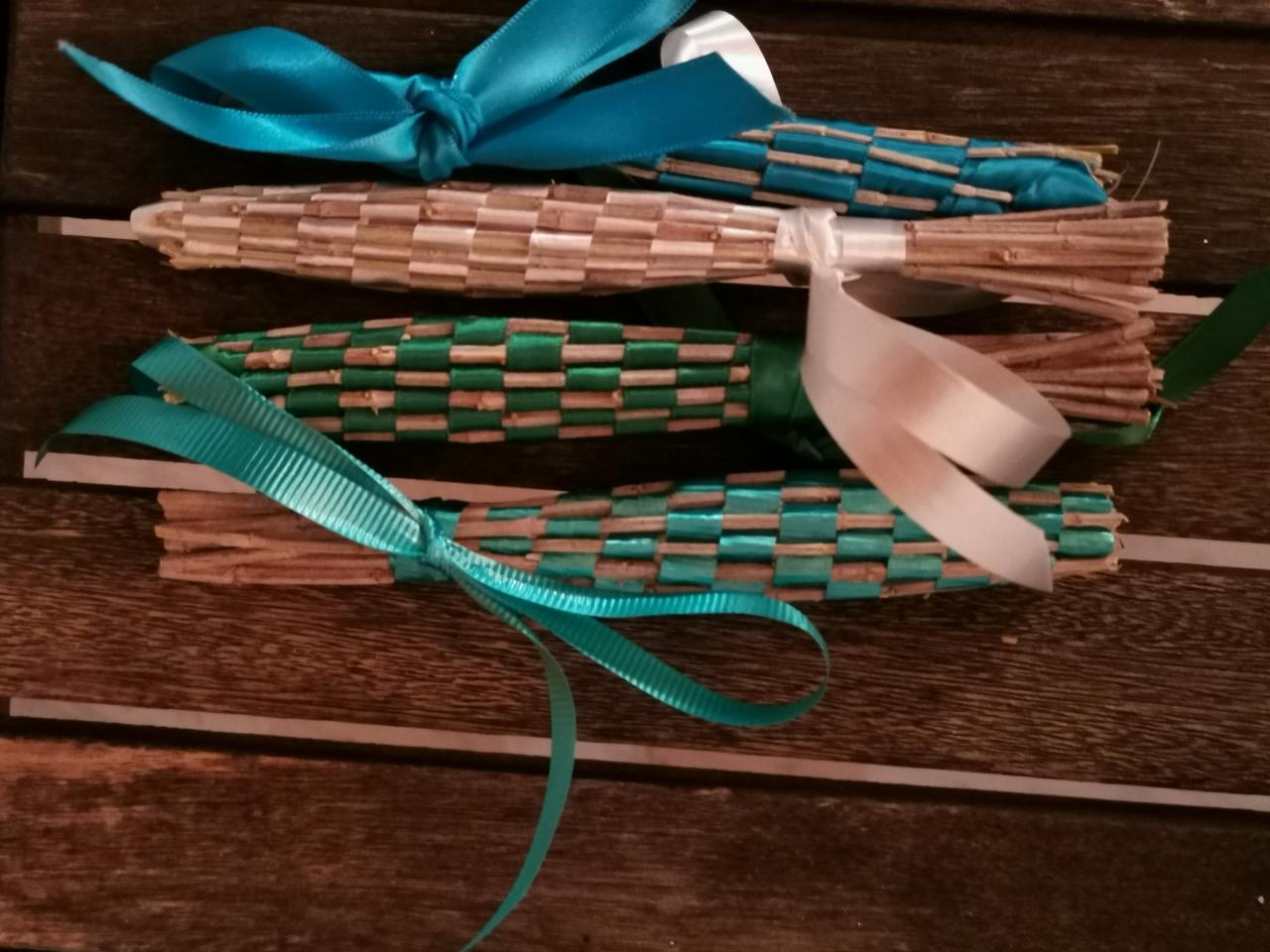As promised some cold and rainy days have slipped in during these last weeks, there may even be a few more to come before we can actually say ‘spring has sprung’.
I find its good to have some handy craft or hobby to fill in the time when one can’t get out into the garden or even on the terrace. I am thinking in this case of what one can make with Lavender, either the full flower head or just the leaves. I was shown how to make Lavender wands with both of these, simply cut an uneven number of flower spikes or if its the top growth of leaves, trim the bottom six or eight inches of leaf off leaving the bare stem, you will need about 15 or 17 stems.
This must be done and worked on whilst the Lavender is freshly cut and flexible before it dries out because you need to tie the flower heads or top leaves tightly together in a little bunch with about a yard of very narrow coloured ribbon. Now carefully bend all the stalks out and over the knotted ribbon covering this little bunch. Pull the long end of ribbon through the stalks to be able to weave this alternately in and out of each one until the little bunch is covered with ribbon and its own stalks .

Once all the flower heads or leaves are covered bind all the stalks tightly together and there you have your little Lavender wand. This little wand seems to remain fragrant with the smell of Lavender for months or even years to be able to keep in the linen cupboards amongst the sheets or any other drawer for that matter and is said to help keep those dreaded little moths away that attack woollen clothes.
The left-over leaves I lay out on a tray to dry out and then make them up into the conventional Lavender bags, I find the leaves every bit as fragrant as the flowers and often find I have more leaf than flower on my shrubs.

Now when you can get outside be sure you get the lawn mower up and working because any time now the lawns will start to need their weekly trim. You may find quite a lot of Rye grass type grasses popping up above the Bermuda grass lawn which won’t have started to grow yet, so the mower can get rid of them along with weeds and leaves.
Bermuder or Gramma grass needs a lot warmer constant temperature and direct sunshine which is the reason for removing all weeds and the like because you will see if there are clumps of other growth the lawn you want just does not grow.

It sounds a contradiction in itself but when it comes to the extreme heat of the summer months it is in fact the Bermuda grass lawn that resists the heat and well watered will give you a really lush green surface where as the rye grass or other types of lawn need to be watered twice a day to keep them lush and green.
It is still well within the time to sow all types of spring and summer vegetables or transplant those that are outdoors and hardy enough to handle. I would still be a little reluctant to put those plants grown indoors fully outside for just another week or two to avoid any damage that may be done by a cold blustery spell.
I have half a dozen very mature Tomato plants in pots indoors with several really big tomatoes on each so am keeping them in a sunny aspect inside. Other plants that have been planted much later have a long way to go yet awhile, lets face it, in northern climates we haven’t even planted the seed yet let alone considered the transplanting.
Here, Potatoes and Broad Beans are already being harvested, Carrots and Runner Beans growing well but still a long way from harvesting. To the Northern eye, it is almost upside down gardening.
Dorothys top tips of the week
- Now when you can get outside be sure you get the lawn mower up and working because any time now the lawns will start to need their weekly trim.
- l It is still well within the time to sow all types of spring and summer vegetables or transplant those that are outdoors and hardy enough to handle.





No comments
To be able to write a comment, you have to be registered and logged in
Currently there are no comments.